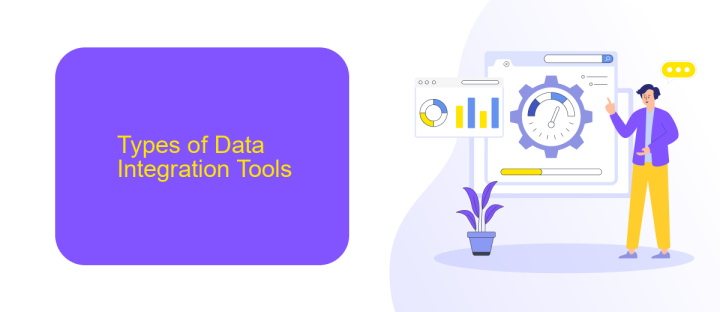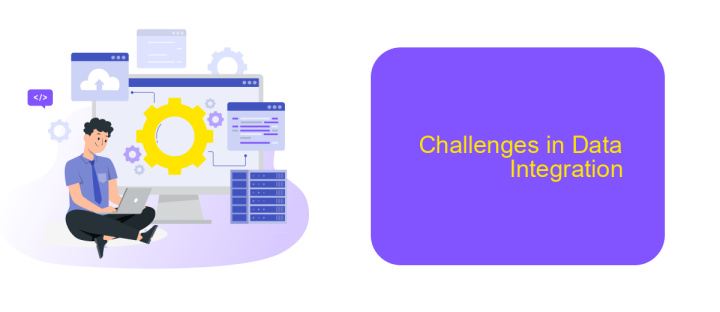Data Integration Technology
Data integration technology is revolutionizing the way organizations handle their information. By seamlessly combining data from disparate sources, it enables more comprehensive analysis and informed decision-making. This technology not only enhances operational efficiency but also drives innovation by providing a unified view of data. In this article, we will explore the key benefits, challenges, and future trends of data integration technology.
Introduction
Data integration technology is crucial for modern businesses, enabling seamless communication and data exchange between disparate systems. As organizations increasingly rely on diverse software solutions, the need for effective data integration becomes more evident. This technology helps in consolidating data from various sources, ensuring consistency and accessibility across the enterprise.
- Streamlines business processes by integrating various applications.
- Enhances data accuracy and accessibility.
- Facilitates real-time data sharing and collaboration.
- Reduces manual data entry and associated errors.
- Supports better decision-making with comprehensive data views.
One of the prominent tools in this domain is ApiX-Drive, which simplifies the integration process by providing a user-friendly interface and a wide range of connectors. It allows businesses to automate workflows, synchronize data across platforms, and ensure that critical information is always up-to-date. By leveraging such tools, organizations can achieve greater efficiency and agility in their operations.
Types of Data Integration Tools

Data integration tools come in various types, each catering to specific needs and use cases. ETL (Extract, Transform, Load) tools are among the most common, focusing on extracting data from different sources, transforming it into a suitable format, and loading it into a target system. These tools are essential for data warehousing and analytics. Another popular type is data replication tools, which ensure data consistency across multiple systems by copying data in real-time or at scheduled intervals. This is vital for businesses that require up-to-date information across various platforms.
Cloud-based integration platforms, such as ApiX-Drive, provide a flexible and scalable solution for connecting disparate systems. These platforms typically offer pre-built connectors and a user-friendly interface, allowing users to set up integrations without extensive coding knowledge. ApiX-Drive, for instance, enables seamless integration between various applications, automating workflows and reducing manual effort. Additionally, API management tools facilitate the integration of different software applications by enabling secure and efficient communication through APIs. These tools are crucial for modern businesses looking to leverage microservices and cloud-native architectures.
Benefits of Data Integration

Data integration is a critical component for organizations aiming to streamline their operations and make informed decisions. By consolidating data from various sources into a single, unified view, companies can enhance their efficiency and accuracy.
- Improved Decision-Making: Centralized data allows for more accurate and timely decisions.
- Enhanced Data Quality: Data integration helps eliminate redundancies and inconsistencies.
- Operational Efficiency: Streamlined processes reduce manual effort and errors.
- Cost Savings: Reduced need for multiple data storage solutions and manual data handling.
- Scalability: Easily manage and integrate growing volumes of data.
Services like ApiX-Drive simplify the process of data integration by providing user-friendly tools to connect various applications and automate data flows. This not only saves time but also ensures that data is always up-to-date and accurate, empowering businesses to focus on strategic initiatives rather than data management tasks.
Challenges in Data Integration

Data integration is a crucial element in modern business environments, enabling seamless information flow across various systems. However, it comes with its own set of challenges that can hinder effective implementation and operation.
One of the primary challenges is data inconsistency, which occurs when data from different sources do not match or align properly. This can result from variations in data formats, units of measurement, or data entry errors. Another significant issue is data security and privacy, particularly when integrating sensitive information across multiple platforms.
- Data Inconsistency
- Data Security and Privacy
- Scalability Issues
- High Integration Costs
To tackle these challenges, businesses often turn to specialized integration services like ApiX-Drive. Such platforms simplify the process by offering automated workflows and real-time data synchronization, ensuring that data remains consistent and secure. By leveraging these tools, companies can overcome integration hurdles and focus on extracting actionable insights from their unified data.
Best Practices for Data Integration
Effective data integration begins with a clear understanding of the data sources and the objectives of the integration process. It is crucial to establish a well-defined data governance framework to ensure data quality, consistency, and security. Utilizing tools like ApiX-Drive can streamline the integration process by providing a user-friendly platform to connect various data sources seamlessly. Regularly monitoring and validating data flows can help in identifying and resolving issues promptly, ensuring the reliability of integrated data.
Another best practice is to prioritize scalability and flexibility in your data integration strategy. As your organization grows, the volume and variety of data will increase, necessitating a robust integration solution. ApiX-Drive offers scalable solutions that can adapt to changing data needs without significant reconfiguration. Additionally, implementing automation wherever possible can reduce manual intervention, minimizing errors and saving time. By following these best practices, organizations can achieve efficient and effective data integration, leading to better decision-making and operational efficiency.
FAQ
What is Data Integration Technology?
Why is Data Integration important for businesses?
What are the common challenges in Data Integration?
How can businesses automate Data Integration processes?
What are the best practices for successful Data Integration?
Apix-Drive is a universal tool that will quickly streamline any workflow, freeing you from routine and possible financial losses. Try ApiX-Drive in action and see how useful it is for you personally. In the meantime, when you are setting up connections between systems, think about where you are investing your free time, because now you will have much more of it.

